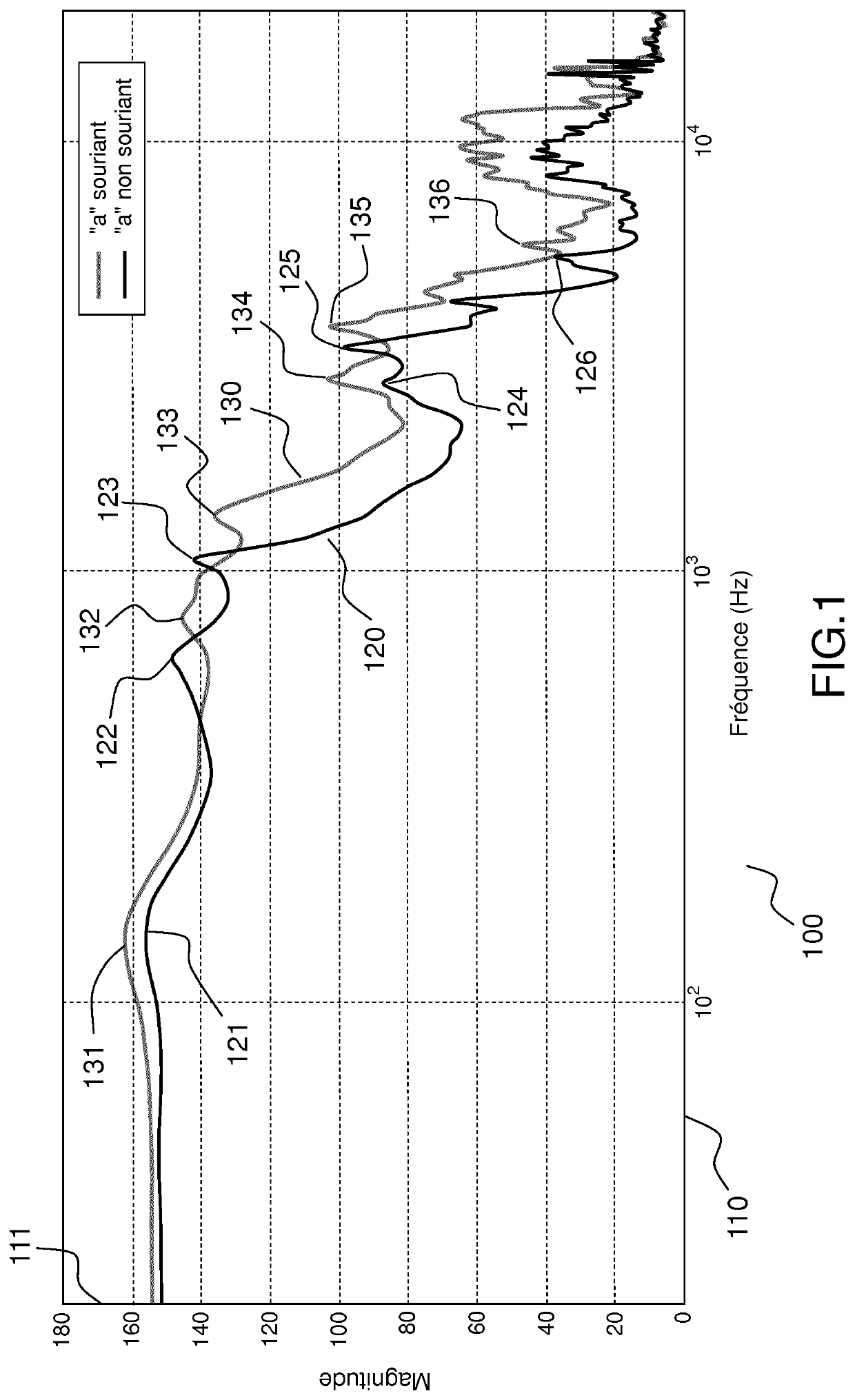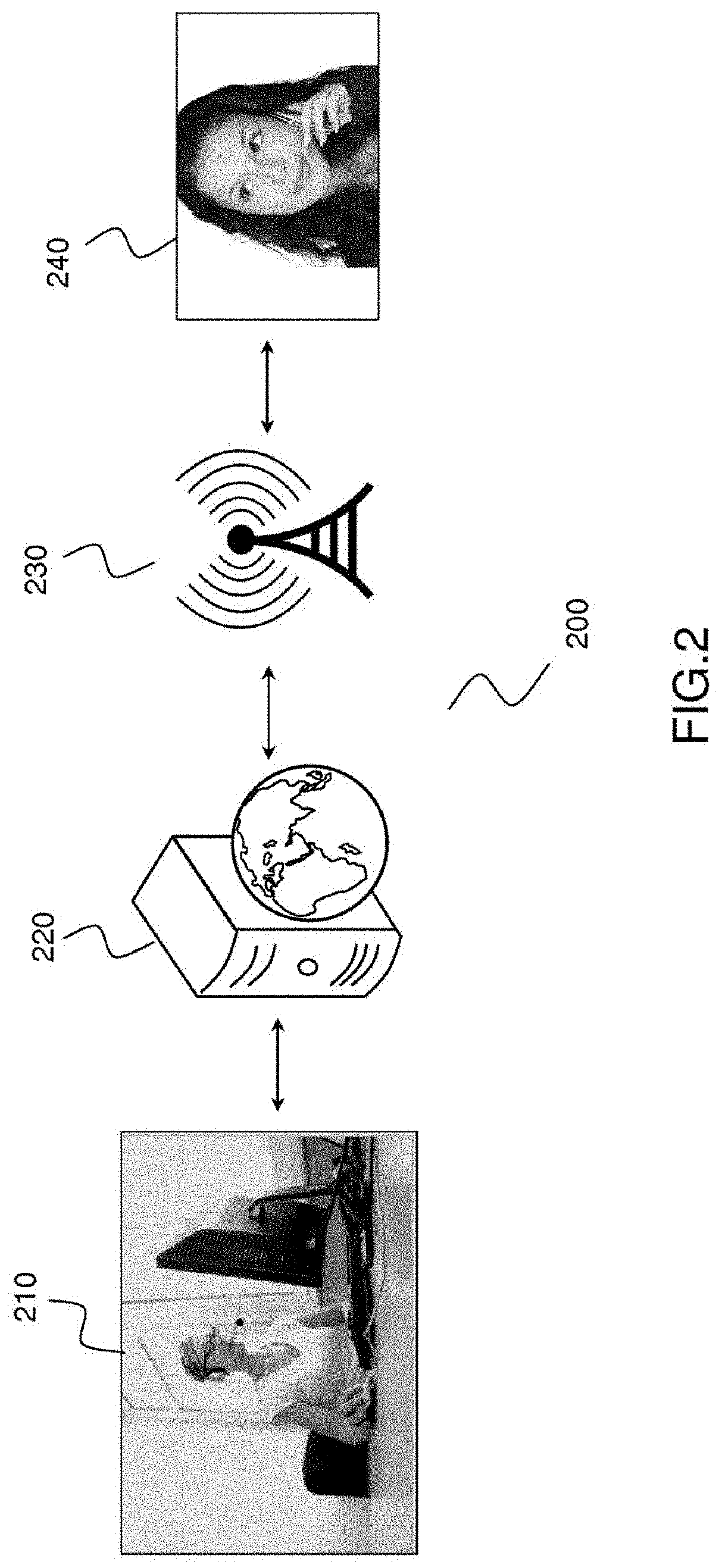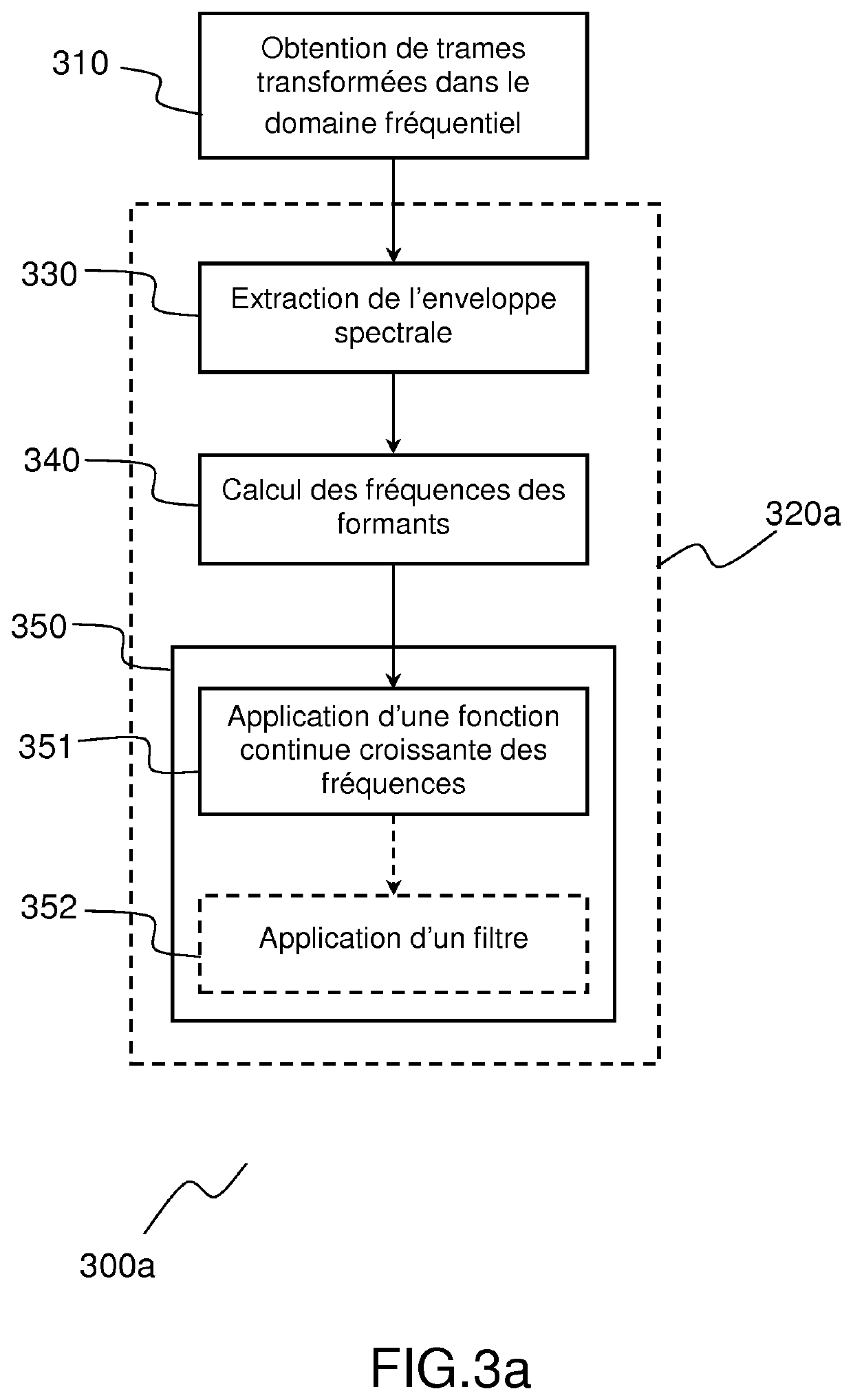Method and apparatus for dynamic modifying of the timbre of the voice by frequency shift of the formants of a spectral envelope
a technology of spectral envelope and formant, applied in the field of modifying acoustic signals, can solve the problems of time shift between moments, positive influence on customer satisfaction, and the inability of the quené method to make it possible to modify a voice in real tim
- Summary
- Abstract
- Description
- Claims
- Application Information
AI Technical Summary
Benefits of technology
Problems solved by technology
Method used
Image
Examples
Embodiment Construction
[0039]FIG. 1 shows an example of spectral envelopes, for the vowel ‘a’, stated by an experimenter with and without smiling.
[0040]The graph 100 shows two spectral envelopes: the spectral envelope 120 shows the spectral envelope of the vowel ‘a’, pronounced by an experimenter without smiling; the spectral envelope 130 shows the same vowel ‘a’, said by the same experimenter, but while smiling. The two spectral envelopes 120 and 130 show an interpolation of the peaks of the Fourier spectrum of the sound: the horizontal axis 110 represents the frequency, using a logarithmic scale; the vertical axis 111 represents the magnitude of the sound at a given frequency.
[0041]The spectral envelope 120 comprises a fundamental frequency F0121, and several formants, including a first formant F1122, a second formant F2123, a third formant F3124, a fourth formant F4125 and a fifth formant F5126.
[0042]The spectral envelope 130 comprises a fundamental frequency F0131, and several formants, including a fi...
PUM
 Login to View More
Login to View More Abstract
Description
Claims
Application Information
 Login to View More
Login to View More - R&D
- Intellectual Property
- Life Sciences
- Materials
- Tech Scout
- Unparalleled Data Quality
- Higher Quality Content
- 60% Fewer Hallucinations
Browse by: Latest US Patents, China's latest patents, Technical Efficacy Thesaurus, Application Domain, Technology Topic, Popular Technical Reports.
© 2025 PatSnap. All rights reserved.Legal|Privacy policy|Modern Slavery Act Transparency Statement|Sitemap|About US| Contact US: help@patsnap.com



